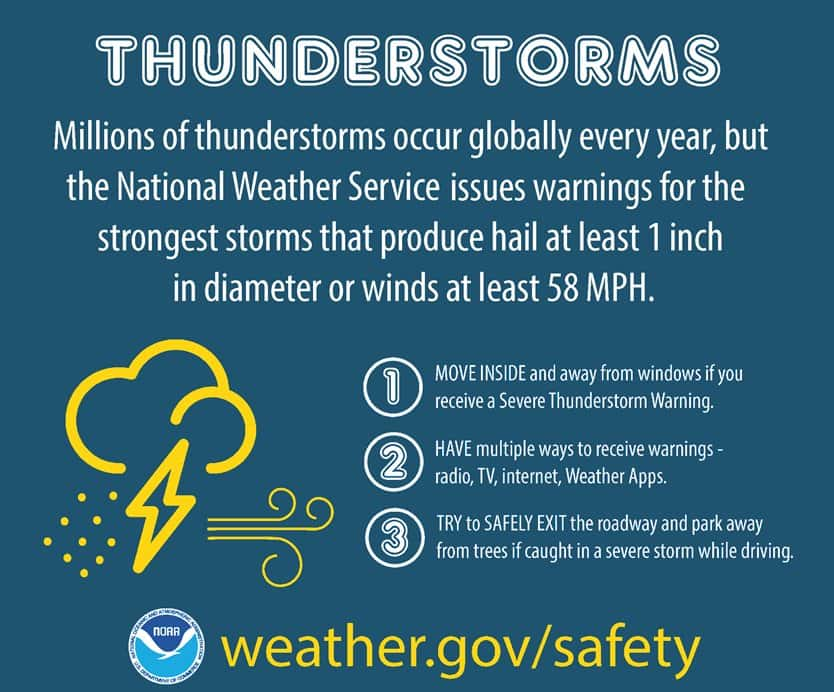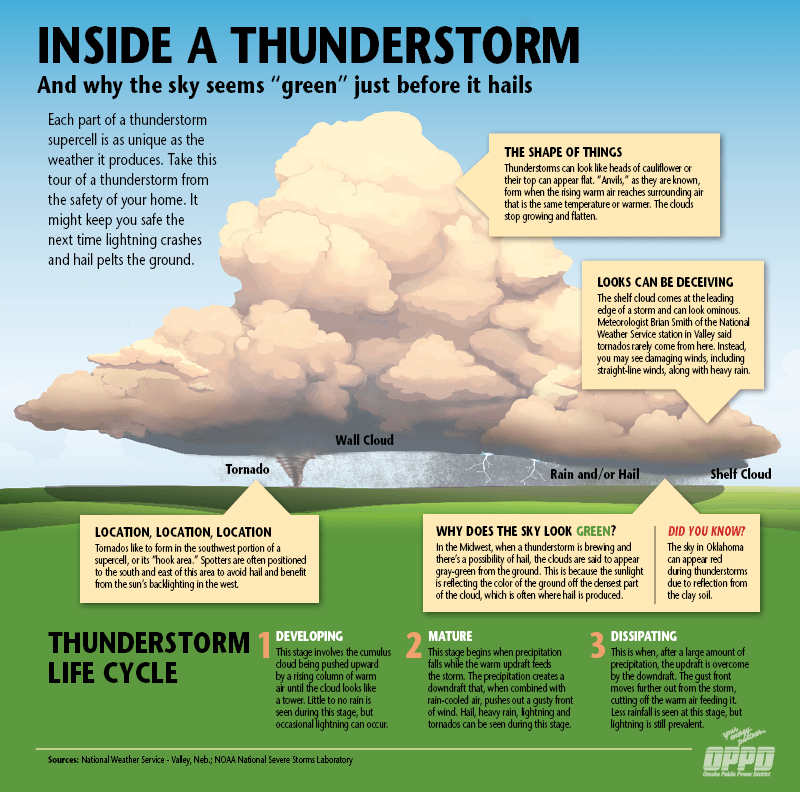
Here is some information explaining the difference between a watch and warning and a graphic from the National Weather Service and OPPD describing what is inside a typical thunderstorm.
What is the Difference Between a Thunderstorm Watch and a Warning?
Watch
- Be prepared because severe weather is possible.
- Check for forecast updates, monitor sky conditions, and know where to take shelter, if needed.
- The watch area is typically large, covering numerous counties or even states.
Warning
- Severe weather has been reported by spotters or indicated by radar, take action.
- Warnings indicate imminent danger to life and property.
- Take shelter in a substantial building. Get out of mobile homes that can blow over in high winds.
- Seek further information, and check for forecast updates from local media and the weather service.
- Warnings typically encompass a much smaller area (around the size of a city or small county) that may be impacted by a large hail or damaging wind.
- These warnings are usually identified by an NWS forecaster on radar or by a trained spotter/law enforcement who is watching the storm.

As the jet stream moves farther to the north, the jet stream drags warm moist air from the Gulf of Mexico into the Midwest. The warm air is pushed up into the atmosphere by colder air at the ground, and thunderstorms are formed.
Thunderstorms are quite common throughout the Midwest from April through July or August- keep an eye on the sky and pay particular notice to the weather to stay safe.








